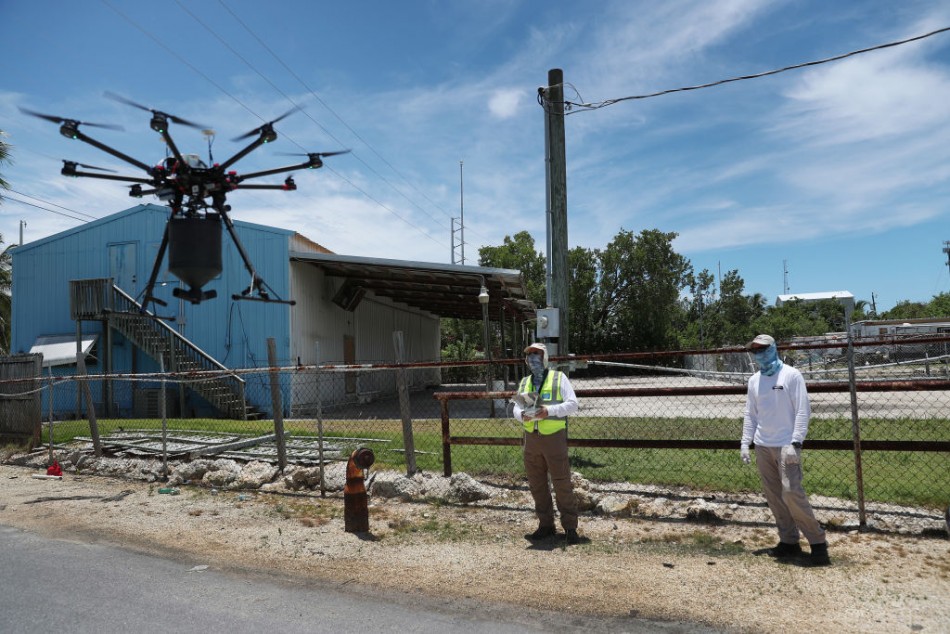California's Rainy Season Brings Mosquito Surge, Prompts Innovative Drone Solution

The rainy season in California has resulted in a significant surge in mosquito populations, raising concerns about the spread of diseases to humans.
In response to this alarming situation, the Orange County Mosquito and Vector Control District has introduced an innovative solution: drones equipped with larvae-killing bacterial spore pellets. This cutting-edge technology allows for precise and efficient mosquito control, targeting areas such as marshes, large ponds, and parks that are breeding grounds for these disease-carrying insects.
Mosquito Surge in the Wake of a Wet Winter
According to KTLA, California's rainy season, following an extraordinarily wet winter, has led to a proliferation of mosquitoes across the state. The excess water has created ideal breeding conditions for mosquitoes, causing their populations to surge.
According to the Orange County Mosquito and Vector Control District, their traps have captured three times the average number of mosquitoes compared to the past 15 years.
This mosquito surge poses a significant public health threat due to the potential transmission of diseases to humans. To combat the mosquito infestation, the Orange County Mosquito and Vector Control District has embraced advanced technology by deploying drones.
These drones are equipped with bacterial spore pellets that effectively kill mosquito larvae. Unlike traditional methods such as backpack sprayers, trucks, airplanes, or helicopters, drones provide more precise treatments and minimize the need for human intervention in sensitive areas.
Using the drones allows the district to access hard-to-reach areas that cannot be easily reached by ground-based methods.
The drone operators, who hold Federal Aviation Administration remote pilot licenses and California Department of Pesticide Regulation unmanned aircraft vector control technician licenses, fly the drones at higher altitudes to ensure they do not disturb nesting birds.
With the ability to treat an acre of land in under two minutes, the drones offer a highly efficient solution that surpasses the capabilities of manual labor.
Environmental Benefits and Disease Prevention
According to Terminix, unmanned aerial vehicles, commonly known as drones, are increasingly utilized by mosquito control programs to address mosquito populations in hard-to-reach remote areas.
These drones offer surveillance capabilities, allowing operators to assess potential larval production sites and monitor drainage patterns, soil types, and topography in real-time.
Compared to helicopters, drones are a less disruptive and potentially more cost-effective option for mosquito control in such areas. They can carry and apply larvicides and adulticides to targeted locations, aided by GPS tracking for precise flight patterns and insecticide application.
Operators can control the drones remotely or opt for autopilot programs, making them versatile tools for larvicide and adulticide applications in specific areas.
Drones also expand the possibilities for smaller mosquito control programs with limited budgets, eliminating the need for piloted aircraft applications and increasing their effectiveness.
According to ABC, studies conducted by the district indicate that birds quickly return to the treated areas after the drone passes over, further affirming the minimal disruption caused by this innovative approach.
The rise in mosquito-borne diseases has become a growing concern globally, exacerbated by the effects of climate change.
The European Union's disease prevention authority recently issued a warning that climate warming increases the risk of mosquito-borne viral diseases.
Additionally, the United States Centers for Disease Control and Prevention reported cases of locally transmitted malaria in Florida and Texas, marking the first occurrence in two decades.
In California, West Nile virus remains the most common and serious mosquito-borne disease, responsible for thousands of human cases and numerous fatalities since 2003.
By leveraging drones, the district can efficiently target mosquito larvae in hard-to-reach areas, minimizing the risk of disease transmission.
This advanced approach not only improves the effectiveness of mosquito control efforts but also offers environmental benefits by reducing the need for invasive treatments.
As mosquito-borne diseases continue to pose challenges, advancements in technology like drone utilization offer hope for gaining ground in the battle against these disease-carrying insects.
Related Article: CDC Issues Health Alert: Local Malaria Cases Detected in Florida, Texas
© 2024 ParentHerald.com All rights reserved. Do not reproduce without permission.
